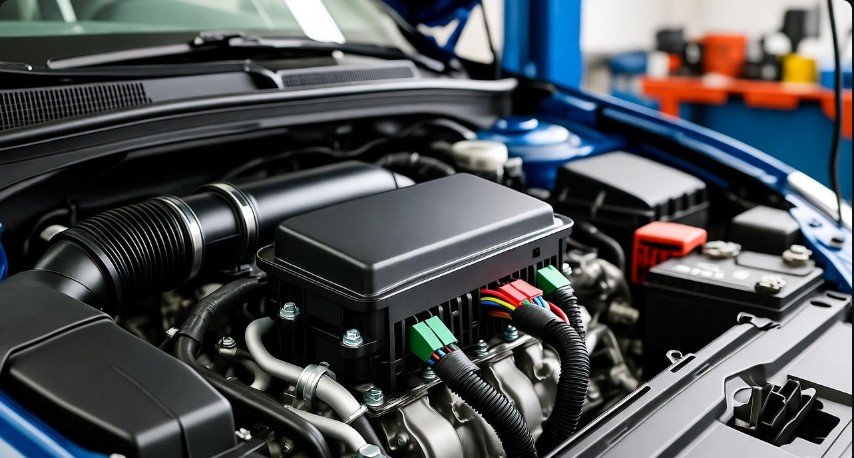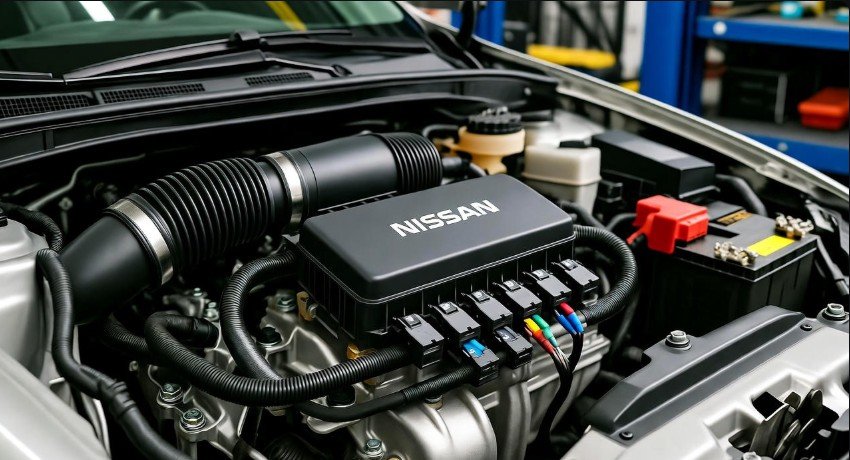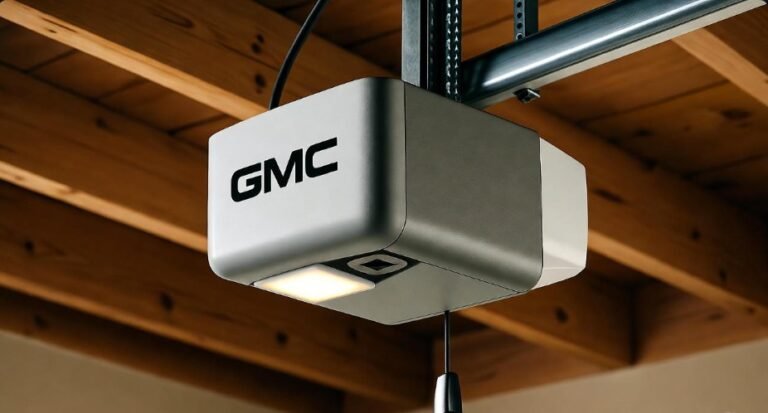What is IPDM Nissan: Everything You Need to Know

When it comes to modern vehicles, electronics are no longer just accessories—they are the lifeblood of your car. In Nissan vehicles, one component silently manages this intricate electrical web: the IPDM Nissan, or Intelligent Power Distribution Module. Think of it as the car’s nervous system. Just as nerves distribute signals throughout our body to keep everything functioning smoothly, the IPDM distributes electrical power to your Nissan’s critical systems, ensuring reliability, performance, and safety. If you’ve ever wondered why some electrical components fail seemingly at random, understanding the IPDM might just hold the key.
Most car owners rarely think about their vehicle’s electrical heart, but the IPDM Nissan is essential for the seamless operation of numerous systems. From controlling the engine’s electronic functions to managing headlights, air conditioning, and even door locks, this compact module keeps your vehicle’s electrical ecosystem balanced. This guide explores everything you need to know about IPDM in Nissan cars—how it works, common issues, troubleshooting tips, and maintenance practices to extend its life.
Understanding the IPDM Nissan: The Heart of Your Car’s Electrical System

The IPDM Nissan is much more than a fuse box. While it does house fuses and relays, it is an intelligent control unit that manages power flow across multiple electronic components. Its core function is to ensure that each system receives the right amount of electricity when it’s needed, without overloading or underpowering sensitive components. Imagine trying to water several plants with one hose—without regulation, some plants would flood while others remain dry. The IPDM ensures the perfect balance.
In practical terms, this module integrates several functions into a single unit. It communicates with sensors, the engine control unit (ECU), and other electronics to optimize vehicle performance. For instance, if the car detects a sudden demand from the air conditioning system, the IPDM can prioritize power distribution to maintain efficiency without compromising engine performance. This smart distribution reduces wear and tear on critical systems, making the car more reliable and safer over time.
Key Functions of the IPDM Nissan
The IPDM Nissan is essentially a conductor for your car’s symphony of electronics. Here are its main roles:
-
Power Distribution: Ensures that critical systems like the fuel pump, engine, and transmission receive consistent power.
-
System Protection: Prevents electrical overloads that could damage sensitive components.
-
Communication Hub: Interfaces with sensors and the ECU to adjust power flow dynamically.
-
Safety Integration: Works alongside safety systems, ensuring features like ABS, airbags, and stability control have reliable power.
By centralizing these functions, the IPDM minimizes potential electrical issues and enhances vehicle longevity. It’s no exaggeration to say that without a properly functioning IPDM, many modern Nissan systems could fail, leaving you with a car that struggles to start or operate efficiently.
Recognizing Common IPDM Nissan Issues
While robust, the IPDM Nissan is not immune to problems. Recognizing early signs of failure can save you from expensive repairs or inconvenient breakdowns. Common issues include:
-
Electrical Malfunctions: Flickering lights, unresponsive windows, or malfunctioning infotainment systems.
-
Starting Problems: Difficulty starting the car or complete failure to start due to disrupted fuel pump control.
-
Engine Stalling: Unexpected engine shutdowns while driving, often linked to power mismanagement.
-
Corrosion or Damage: Moisture or dirt can compromise the module’s circuitry, especially in older vehicles.
These issues may arise due to ageing components, corrosion, or electrical surges. While minor problems may be temporarily resolved by resetting the IPDM, persistent issues usually require professional diagnostics and, in some cases, replacement.
IPDM Nissan Across Different Models
Not all IPDMs are created equal. Nissan has tailored this module to meet the demands of various models over the years. From compact sedans like the Nissan Sentra to SUVs like the Rogue, the module has evolved in complexity and capability. Newer models feature advanced IPDMs that integrate with intelligent key systems, improving both security and convenience.
In older models, the IPDM primarily focused on power distribution and relay management. Today, it performs dynamic power adjustments, communicates with multiple ECUs, and even participates in energy-saving strategies to optimize fuel efficiency. Understanding your specific Nissan model’s IPDM functionality can help you diagnose issues more accurately and select the correct replacement if needed.
How to Troubleshoot Your IPDM Nissan
Troubleshooting the IPDM Nissan requires a systematic approach. Start by inspecting the module for physical damage, corrosion, or loose connections. Ensure all relays and fuses are in proper working order, as these small components often mimic IPDM failure symptoms.
Next, consider performing a reset procedure, which can resolve temporary glitches caused by electrical surges. For persistent issues, a professional diagnostic tool can communicate directly with the IPDM to pinpoint faults. Replacement, when necessary, should follow precise steps and require specific tools to avoid damaging sensitive electronics. Always refer to your vehicle’s service manual for model-specific guidance.
Maintenance Tips for Nissan’s IPDM
Maintaining the IPDM Nissan doesn’t have to be complicated. A few simple steps can extend the module’s lifespan:
-
Regular Checks: Inspect the module for signs of wear, corrosion, or loose connections.
-
Keep it Clean: Protect the module from moisture, dirt, and debris.
-
Safe Electrical Practices: Avoid frequent jump-starts or modifications that could cause surges.
-
Upgrades: Consider upgrading to newer IPDM versions if available for improved performance and compatibility.
Regular attention ensures that your vehicle’s electrical systems remain reliable and reduces the likelihood of unexpected failures.
IPDM Nissan and Vehicle Performance
The IPDM Nissan does more than just manage electrical components—it directly influences your car’s overall performance. By efficiently distributing power to critical systems like the fuel pump, ignition system, and engine management controls, the IPDM ensures smooth acceleration, reliable starting, and consistent engine operation. For example, if the IPDM fails to properly supply power to the fuel pump, your vehicle may hesitate during acceleration or fail to start altogether.
Additionally, the IPDM contributes to fuel efficiency. Modern Nissan vehicles use intelligent power management to reduce unnecessary energy consumption, particularly when auxiliary systems like air conditioning or electronic steering are active. The module can temporarily adjust power allocation, balancing performance and efficiency. From a driver’s perspective, a healthy IPDM translates into consistent vehicle responsiveness, optimal fuel economy, and reduced risk of sudden breakdowns, making it one of the unsung heroes of Nissan engineering.
Advanced Troubleshooting for IPDM Nissan
When basic inspection or resets do not resolve issues, more advanced troubleshooting may be required. Here are some strategies:
-
Voltage Testing: Measure the voltage output from the IPDM to ensure consistent power delivery.
-
Diagnostic Scan: Use a professional OBD-II scanner to check for IPDM-related error codes.
-
Relay Testing: Swap relays within the module to rule out individual component failures.
-
Wiring Inspection: Check the wiring harness for corrosion, fraying, or loose connections, as these can mimic IPDM failure.
While some of these steps can be performed by a knowledgeable car owner, consulting a certified Nissan technician is often safer. The IPDM is a delicate system, and improper handling can lead to further electrical complications or void warranties.
Replacing the IPDM Nissan
If your IPDM is damaged beyond repair, replacement becomes necessary. Here’s what the process generally involves:
-
Disconnect the Battery: Safety first—disconnecting the battery prevents electrical shorts.
-
Locate the IPDM: Typically found near the engine bay fuse box. Refer to your vehicle’s manual for exact location.
-
Remove Connections Carefully: Disconnect wiring harnesses and relays while noting their placement for reassembly.
-
Install the New Module: Secure the replacement module, reconnect all wires, and ensure proper seating.
-
Perform Reset/Programming: Some Nissan models require module programming to synchronize with the vehicle’s electronic systems.
Replacing an IPDM can be challenging without proper tools or experience, so professional assistance is highly recommended. A correctly installed module restores reliability and ensures your Nissan operates at its intended performance level.
Best Practices to Extend IPDM Life
Keeping your IPDM Nissan in good condition is easier than you might think. Following these best practices can significantly prolong its lifespan:
-
Avoid Overloading Electrical Systems: Excessive aftermarket electronics can strain the IPDM.
-
Regular Cleaning: Ensure the module and surrounding area remain free of moisture and debris.
-
Routine Inspections: Periodically check for corrosion, loose connectors, or damaged fuses.
-
Update Software if Applicable: Some newer modules may benefit from firmware updates provided by Nissan service centers.
By treating the IPDM as a vital component rather than an afterthought, you ensure a smoother driving experience and reduce costly repairs down the line.
Common Myths About IPDM Nissan
Despite its importance, misconceptions about the IPDM Nissan abound. Let’s address a few common myths:
-
“It’s just a fuse box” – While it contains fuses, the IPDM actively manages power, making it far more sophisticated.
-
“IPDM failures are rare” – While robust, age, moisture, and electrical surges make failures relatively common in older models.
-
“You can ignore minor electrical issues” – Small signs like flickering lights can indicate underlying IPDM problems. Early attention prevents bigger issues.
Understanding these truths helps owners make informed decisions about maintenance and troubleshooting.
FAQs About IPDM Nissan
1. How do I know if my IPDM Nissan is failing?
Common signs include difficulty starting, engine stalling, flickering lights, or malfunctioning electronic components.
2. Can I reset my IPDM Nissan myself?
Yes, minor glitches can sometimes be fixed by disconnecting the battery or performing a model-specific reset. For persistent issues, professional diagnostics are recommended.
3. How much does it cost to replace an IPDM Nissan?
Replacement costs vary depending on the model and year, typically ranging from $300 to $800, including labor.
4. Does IPDM affect fuel efficiency?
Yes, an efficiently operating IPDM optimizes power distribution to reduce unnecessary energy consumption, indirectly improving fuel economy.
5. Can aftermarket electronics damage the IPDM?
Yes, improper installation of additional electronics can overload the IPDM and cause premature failure.
6. Is the IPDM the same across all Nissan models?
No, it varies in complexity and features depending on the model and year. Newer vehicles often integrate more advanced functions.
7. How often should I inspect the IPDM?
Routine inspection every 12–18 months or during regular service intervals is recommended to ensure longevity.
8. Can moisture damage the IPDM?
Absolutely. Exposure to moisture or corrosion is one of the leading causes of IPDM failure.
Conclusion
The IPDM Nissan is a critical yet often overlooked component of your vehicle’s electrical system. From ensuring smooth engine operations to optimizing fuel efficiency and safeguarding electronic components, it acts as the central nervous system of your car. Understanding its functions, recognizing potential issues, and practicing regular maintenance can save you from costly repairs and enhance your vehicle’s reliability. Whether you drive a compact Sentra or a rugged Rogue, giving your IPDM the attention it deserves is key to keeping your Nissan running smoothly for years to come.
By viewing the IPDM as more than just a fuse box and embracing its role in modern automotive engineering, you can approach troubleshooting, maintenance, and upgrades with confidence. A healthy IPDM translates directly to a reliable, efficient, and enjoyable driving experience.






